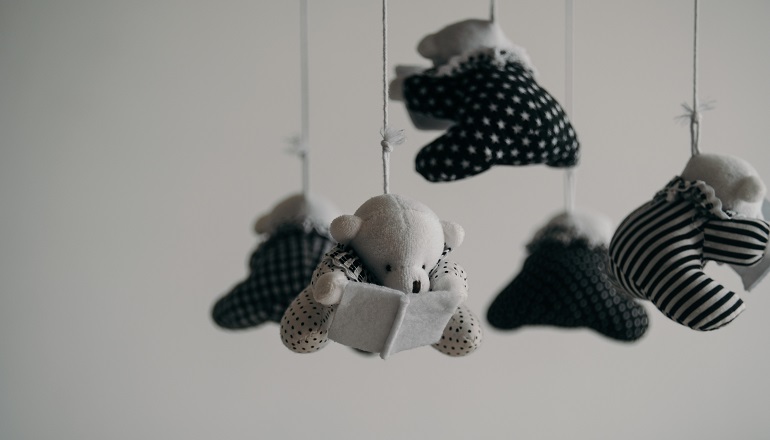My two-and-a-half-year-old daughter, Anna, has a nesting doll. For a while, she was obsessed with it. She’d strew doll pieces across her bedroom rug, then slowly pick them up and fit them back together.
“She’s working on volume, figuring out what fits in where,” my friend, Sarah, said, watching her one afternoon. Sarah had been reading books with titles like Your Child As Scientist for years. I’d choose a good novel over a child-rearing book any time. “Anna is just playing with her toys,” I said to myself.
But the doll reminds me of Anna’s mothers. She has three: her birth mother, her foster mother, and me, her forever mother.
Anna’s first mother carried her for nine months, cared for her for three weeks, then brought her to the gates of a social welfare institute in southern China. I have a photo of Anna taken on the day she was found. It shows a tiny infant swimming in a brown, corduroy vest and maroon leggings. My daughter’s birth parents gave Anna her pointed chin, her tendency to hold her crayons with her left hand, and her ready laugh. But those clothes were their only material legacy. They sit in a vacuum-sealed bag in her bedroom closet.
I took them out when friends who have lived in China came to visit us last summer. “What kind of people do you think they are?” I asked. “Country people? Urban?” I wanted something, anything, to tell Anna about her birth parents. “It’s hard to tell,” one said, pressing the little vest to her nose. “But this smells like China—a crowded, dusky smell.” Like apartments I know. I fear the scent will fade away, one more thing from my daughter’s beginnings I won’t be able to give her.
[Instant Download: How to Raise Adopted Children]
I didn’t get to meet the foster mother who cared for Anna during the first year of her life, but I was given some photos of her. In one, she’s holding Anna in what looks like a Chinese version of the Berkeley, California, tot lot we frequent. She appears to be in her early 40s, with high cheekbones and a bright, lipsticked smile.
When Anna was handed to me, she was red-faced, screaming—and immaculate, from her thatch of dark hair to the tips of her tiger-face slippers. Anna was also used to being loved, and she quickly allowed me into her heart. For this, I will always be grateful to her second mother.
A few months ago, my social worker told me I needed to start talking to my daughter about her mothers. “Anna shouldn’t remember a time when she didn’t know the word birth mother,” she said. “Jeez,” I thought to myself, “Anna’s just two years old.” But, as hard as it was, I started to talk. That night, while Anna drank her bottle, I told her about my long airplane ride. I told her how happy I was to finally hold her, and how she cried and cried until I fed her Cheerios.
And when a pregnant mom at Anna’s day care started to show, Anna and I talked about the baby growing in the woman’s belly. “I was inside Mama?” Anna asked. We were both wearing flannel pajamas and sitting on my bed. The clock said 6:30 a.m. I took a deep breath. “Anna, you didn’t grow inside Mama. You grew inside another mama, your birth mama, but she couldn’t raise you. So, after you were born, she brought you to a safe place, where nice people took care of you until I came to get you.”
[Answering Kids’ Big Questions About Birth Parents]
Later, I weighed my words. Did I say it the right way? Did I scare her? Had I scarred her? Then I remembered what our social worker said: I will have hundreds of chances to tell Anna this story. And it will take her years to figure out how her mothers fit together, and how each one fits within her.
In the meantime, she is a toddler, with more pressing matters on her mind. When I finished talking, she began examining the breakfast design on my pajamas. “There are pancakes all over your pajamas,” Mama, she said. “And strawberries, too. Upside down.”



